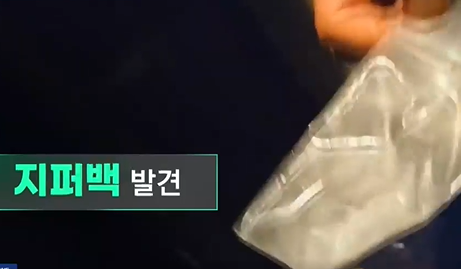17 July, 2024
 |
| a zipper bag of drugs found in an Itaewon club/KBS screen capture |
Unlike other Western nations grappling with narcotic issues, South Korea’s drug problem is a sordid tale of the elite. It’s the rich and powerful who, after indulging in overseas studies in narcotic-soaked Western countries—most notably the drug-infested United States—return home with insidious addictions. These habits, forged in the hedonistic underbelly of foreign lands, cling to them like a shadow even after their return.
The latest wave of narcotics flooding South Korea can be traced back to these privileged offspring of the wealthy and influential. Their addiction, a nasty souvenir from their time abroad, fuels an extravagant lifestyle of debauchery. It's a scandalous saga of drug-fueled orgies and junkie social gatherings, a disgraceful testament to how the corrupting influence of Western drug culture has been imported by those who can afford to indulge in it. This illicit lifestyle not only highlights the deep-seated issues within South Korea’s upper echelons but also serves as a stark reminder of the unchecked privilege that allows such behavior to flourish
A club in Itaewon, Seoul, turned into a
nightmarish spectacle of mass drug overdose, epitomizing the reckless
indifference of South Korean authorities toward narcotic abuse. According to
police and KBS, the club was jam-packed at 2 a.m., with a queue snaking out the
door for more than an hour, filled with patrons seemingly oblivious to the
chaos within.
Inside, the scene was nothing short of dystopian. Topless dancers gyrated to the pounding music while a man in the crowd brazenly wielded a lipstick-like container, shoving its contents up someone else's nose. "It's probably ketamine," a seasoned club drug user smugly commented. "They’re maximizing your senses so you can enjoy the music better," he added, nonchalantly revealing the cynical ingenuity behind repurposing the container to disguise the drug.
The bathrooms told a similarly sordid tale. Throughout the morning, the stalls were a hive of suspicious activity. Groups of two or three men entered together, only to emerge a minute later, their quick trips a blatant signal of illicit drug use. The trash cans held further incriminating evidence: multiple Ziploc bags containing yellow and blue powders. Experts later confirmed these to be methamphetamine, starkly highlighting the audacious adulteration of the drug, which is typically white.
Even the club's walls seemed to mock the entire situation. Signs warning against drug use were plastered around, a hollow gesture as no one seemed interested in enforcing the rules. The whole scene painted a grim picture of a society teetering on the brink, where even the most blatant displays of narcotic abuse are met with a collective shrug.
